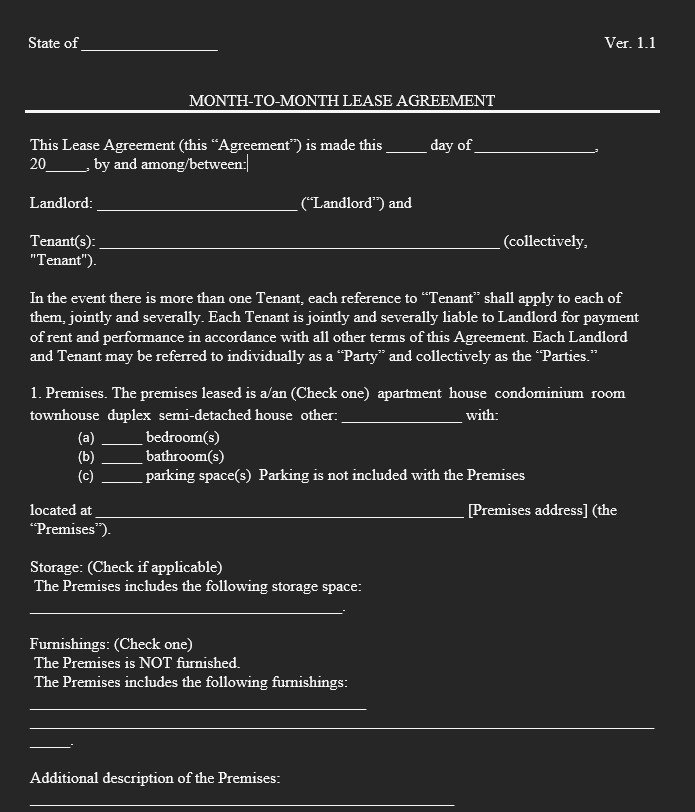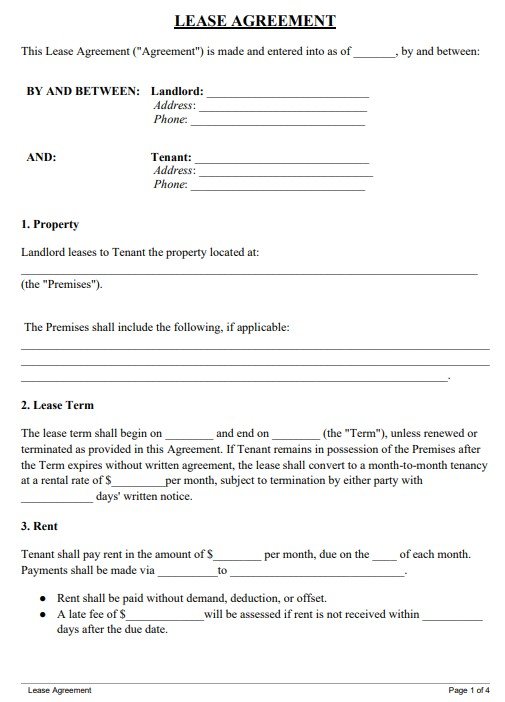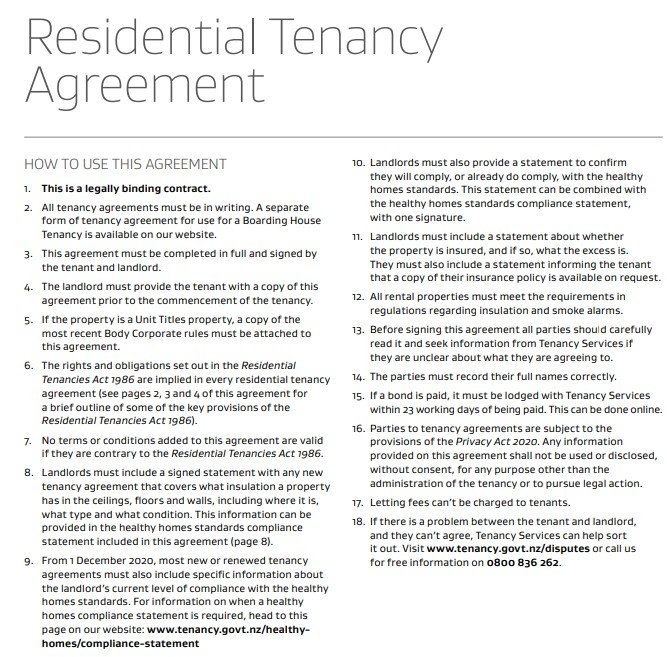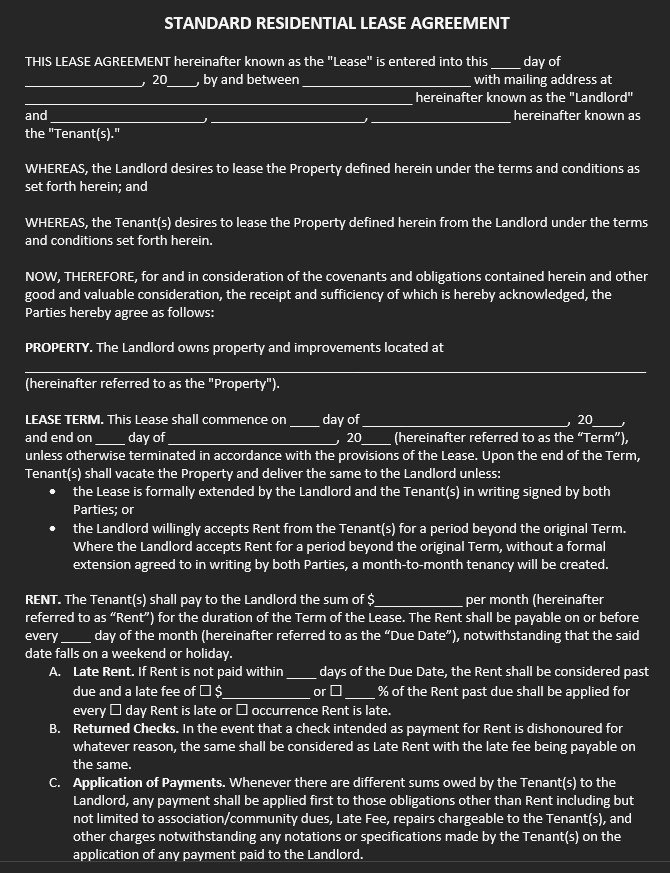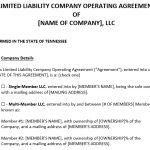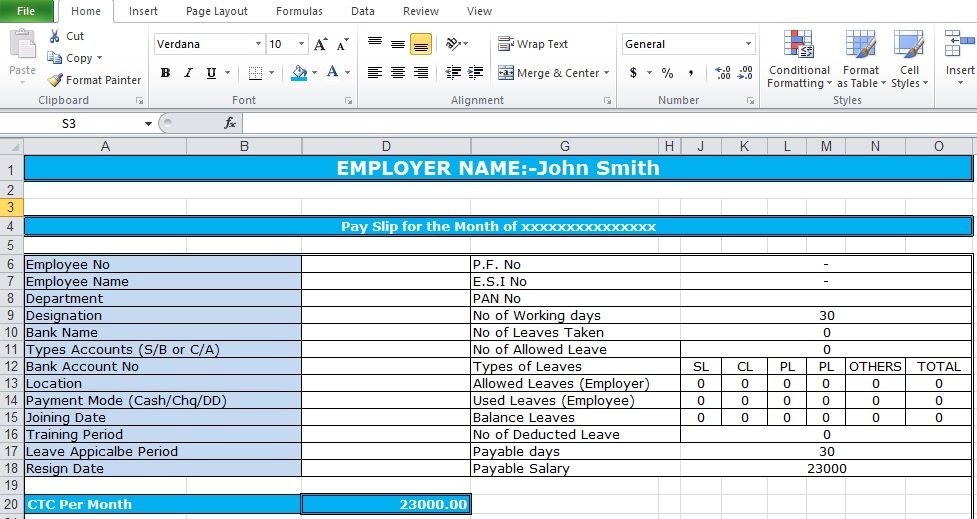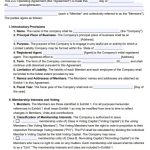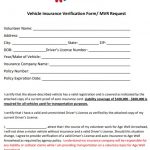A rental and lease agreement template is a legally binding contract between a landlord and the tenant. It explains the terms under which the landlord rents property to a tenant in exchange for monthly payments. The tenant gets access to the property after signing the lease. This agreement provides legal protection to both parties.
Table of Contents
Why do you need a lease agreement?
You need a lease agreement because of the following reasons;
- To describe your responsibilities as a landlord
- To set rules for the tenants living on your property
- Required by state law
- Assists you in avoiding disputes with your tenants
- To fix problems when they arise
If you don’t use a lease agreement, you may have to face the following issues;
- Lose rent money
- Be accountable for illegal activities on the property
- Get penalties for unpaid utility costs
- Spend a lot of money on repairing property damage
Thus, you must have a lease agreement if you are renting a home, land, or commercial building. After signing the agreement, all tenants must receive a copy of the lease agreement.
The process of leasing:
Let us discuss step-by-step the process of leasing;
Tenants view the rental unit
The tenants will view the rental unit before signing a lease agreement. They view it to check whether this space meets their living standards. If they like it, they ask the real estate agent, manager, or landlord to make an offer on the basis of the monthly rent amount.
Rental application
When the offer is made, the tenant has to authorize a rental application and pay a small fee. This provides the landlord consent to perform a credit and background check legally.
Landlord runs a consumer report
Depending on the state, it is highly recommended that the landlord runs a consumer report. This enables them to view the tenant’s credit and background reports.
Verify references
After completing a rental application, the tenant has to provide references like past employers and landlords. Then, the landlord contacts them individually by phone. They ask them about the character of the tenant and whether or not they paid rent on time during their tenancy.
Approving the tenant
The landlord writes a lease agreement after approving the tenant. Here are the main negotiated items of a lease;
- Monthly rent amount
- Security deposit
- Utilities
- Fees
- Move-in-date
- Term
Lease signing
The lease agreement becomes legally binding until the end of its term when both parties sign it.
- Tenant’s obligations: when signing, the tenant has to pay the first month’s rent, security deposit, last month’s rent, and other fees that are due during the 1st month of occupancy.
- Landlord’s obligations: when signing, the landlord has to provide lead-based paint disclosure, move-in inspection checklist, and state disclosures.
Taking occupancy
On the 1st day of the lease term, access to the rental unit is granted. Before the start of the term, if the tenant moves in then the tenant has to pay on the basis of the pro-rata number of days.
What are the landlord and tenant laws by state?
The landlords and tenants have individual legal rights and obligations as per federal law. When tenants rent a property, they have the right to privacy. In addition, the landlord needs to access the property because of some reasons like maintenance or inspection. In every state, before accessing a rental unit, the landlord has to give advance notice to their tenants.
Security deposit laws
Every state requires a landlord to collect the maximum amount of money from a tenant as a security deposit. Also, landlords have to return security deposits to tenants within a particular time. From the tenant’s security deposit, a landlord can deduct the following costs;
- Unpaid rent
- Cleaning costs
- Key replacement costs
- Cost to repair damages
- Any amount legally allowed to deduct under the agreement
Writing a rental/lease agreement:
Here are the steps to write a rental or lease agreement;
Provide names of tenant and landlord
Write the complete name or company name of the landlord on the basis of whether the landlord is an individual or an entity. Similarly, provide the complete name of the tenant or a company on the basis of whether the tenant is an individual or an entity. Write the name of each additional tenant in case there is more than one tenant.
Explain the premises
Describe the type of residential property being rented whether it is an apartment or house. Specify the type of property in case none of the options on the form explain it.
Furthermore, it is important to state whether the rental property includes storage space or not. If the rental property includes furnishing then give a list of the furnishings associated with the rental. Include any additional information that may help to describe the property.
Identify lease term
Specify in the agreement whether the lease term is for a specific time or whether it will continue on a month-to-month basis. Give the start and end date for the lease term if this is a fixed lease. On the other hand, provide only the start date of the lease if this is a month-to-month lease.
Specify rent details
In this section, you have to provide the following details;
- The dollar amount of the monthly rent payment
- The day the rent is due
- The payment method
Provide guaranty information
Under this lease, indicate whether a guarantor is required for the tenant or not. If required then write the complete name and address of the guarantor.
Explain any late fees
State the consequences if the rent is not paid on time. Indicate whether the landlord charges a late fee or not. If yes, choose whether the late fee will be charged as a set dollar amount or a percentage amount.
Mention utility details
If the landlord is responsible for any utilities then mention that specific utilities.
Security deposit details
Indicate the specific amount that the tenant has to pay the landlord as a security deposit. After the end of this agreement specify the number of days when the landlord has to return the security deposit to the tenant.
Note regarding using premises
The property will be used by the tenant and the tenant’s immediate family for residential purposes. Additionally, if the tenant’s guest causes any damage to the property, the tenant will be responsible for it.
Determine the condition of the premises
Specify in the agreement that the tenant agrees to the current condition of the appliances and furnishings.
Maintenance and repairs
The tenant has no right to remove any appliances, fixtures, and furnishings and they are responsible to maintain the property. Also, the tenant has to maintain an outside area or grounds if the property has one.
Select the rules and regulations option
You should also state in the agreement whether there are separate rules and regulations for the rental unit or not.
Military clause option
For activity duty in the US armed forces, specify whether the tenant may terminate the lease agreement early or not.
Select the smoking option
Specify whether the tenant is allowed or prohibited to smoke on the rental property.
Enter pet option
If pets are allowed on the property then indicate the type of pet(s) and the amount of any pet deposit.
Inspection checklist option
At the time of move-in, state whether or not the tenant has to complete an inspection checklist. In case yes, include at the end of the agreement a sample of the ‘Rental Inspection Checklist’ for your reference.
Renter’s insurance option
If the tenant has to obtain a renter’s insurance policy then make sure that the policy must have at least $100,000 of personal liability coverage. Moreover, the landlord must be specified as an interested party or additional insured.
Select the assignment and subletting option
In case, the tenant is allowed to assign or sublease any part of the property, specify whether they have to obtain the written consent of a landlord to assign or sublease.
Fill in the default details
The landlord may provide the tenant notice in the event of default. Also, they give them the opportunity to correct the default. Specify the number of days that are given to the tenant to correct the default. In case, the tenant fails to pay rent indicate the number of days when the landlord can terminate the agreement after providing the notice.
Select the lead disclosure option
If the rental unit was constructed before 1978, the landlord must specify whether there are lead-based paint hazards on the property. At the end of this agreement, include a ‘Disclosure of Information on Lead-Based Paint’ for your reference.
Enter notices information
Make sure all notices are in writing. Indicate the place where the landlord and tenant should send notices.
Fill in governing law state
Mention the state’s laws that will specify the construction of this agreement.
Write disputes information
If there any dispute arises then indicate how it will resolve;
- Court litigation
- Binding arbitration
- Mediation
- Mediation then arbitration
Miscellaneous terms and information
Any provisions that aren’t included in this agreement, mention them in this section.
month to month lease agreement template
rental and lease agreement template
residential tenancy agreement
standard residential lease agreement template
FAQ’s:
Who requires a residential lease agreement?
Anyone who is involved in leasing a property must have a lease agreement. This document specifies the terms of the agreement and keeps both parties protected by law.
Difference between a lease and a rental agreement?
Typically, a rental agreement creates for tenancy for a short period of time which usually ends within 30 days. The lease is automatically renewed unless the renter or landlord gives a move-out notice.
However, a lease agreement allows the tenant to occupy the property for a specific term that usually runs from six months to a year or more. The landlord can’t change the terms of the lease unless the tenant agrees.
Can I use a rental agreement as proof of address?
Yes, you can use a valid rental or lease agreement as proof of address.
What should be included in a lease agreement?
Here are the main elements that must be included in the agreement;
- Terms
- Rent
- Deposits and fees
- The names of all tenants
- Occupancy limits
- Restrictions on disruptive activity
- Pets
- Maintenance and repairs
- Utilities
- Entry to the property

